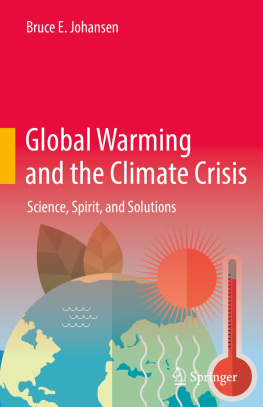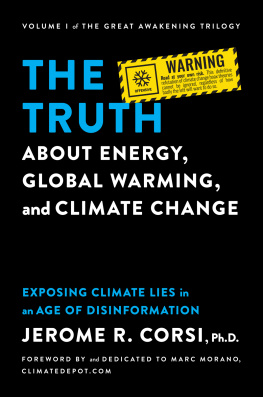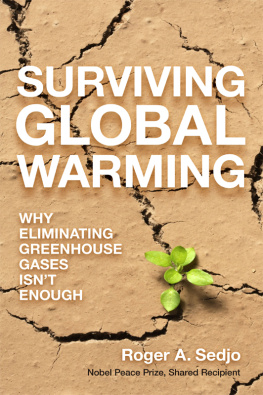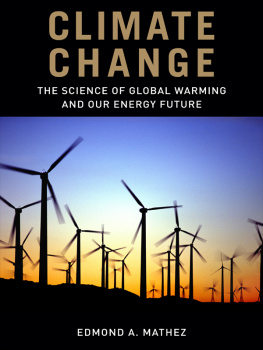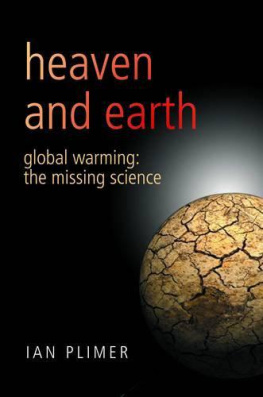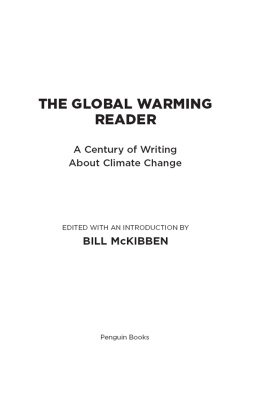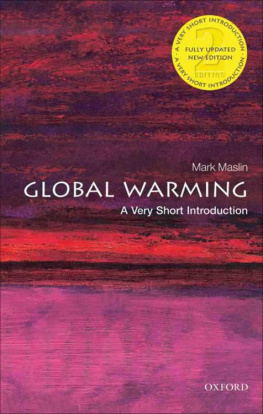Contents

This edition first published 2011 2011 by Blackwell Publishing Ltd
Blackwell Publishing was acquired by John Wiley & Sons in February 2007. Blackwells publishing program has been merged with Wileys global Scientific, Technical and Medical business to form Wiley-Blackwell.
Registered Office
John Wiley & Sons Ltd, The Atrium, Southern Gate, Chichester, West Sussex, PO19 8SQ, UK
Editorial Office
9600 Garsington Road, Oxford, OX4 2DQ, UK
For details of our global editorial offices, for customer services and for information about how to apply for permission to reuse the copyright material in this book please see our website at www.wiley.com/wiley-blackwell .
The right of the author to be identified as the author of this work has been asserted in accordance with the UK Copyright, Designs and Patents Act 1988.
All rights reserved. No part of this publication may be reproduced, stored in a retrieval system, or transmitted, in any form or by any means, electronic, mechanical, photocopying, recording or otherwise, except as permitted by the UK Copyright, Designs and Patents Act 1988, without the prior permission of the publisher.
Designations used by companies to distinguish their products are often claimed as trademarks. All brand names and product names used in this book are trade names, service marks, trademarks or registered trademarks of their respective owners. The publisher is not associated with any product or vendor mentioned in this book. This publication is designed to provide accurate and authoritative information in regard to the subject matter covered. It is sold on the understanding that the publisher is not engaged in rendering professional services. If professional advice or other expert assistance is required, the services of a competent professional should be sought.
Library of Congress Cataloging-in-Publication Data
The warming papers : the scientific foundation for the climate change forecast / edited by David Archer and Raymond Pierrehumbert.
p. cm.
Includes bibliographical references and index.
ISBN 978-1-4051-9616-1 (pbk.) ISBN 978-1-4051-9617-8 (hardcover)
1. Greenhouse effect, Atmospheric. 2. Greenhouse gases. 3. Global temperature changes. I. Archer, David, 1960
II. Pierrehumbert, Raymond T.
QC912.3.W37 2011
551.5dc22
2010040516
A catalogue record for this book is available from the British Library.
1 2011
Preface
Global warming is arguably the defining scientific issue of modern times, but it is not widely appreciated that the foundations of our understanding are almost two centuries old. The sensitivity of climate to changes in atmospheric CO2 was first estimated about one century ago, and the rise in atmospheric CO2 concentration was discovered half a century ago. The fundamentals of the science underlying the forecast for human-induced climate change were being published and debated long before it started to appear in the newspapers.
The aim of this book is to gather together the classic scientific papers that are the scientific foundation for the forecast of global warming and its consequences. These are not necessarily the latest in the state of play; there can be subsequent quantitative revision. But these papers are the big ideas. Some of the good old good ones can be heavy going, it must be admitted, so we will try to guide the reader with some verbage of our own, unworthy though it may be. We summarize the results for you, and provide the latest revisions from the ongoing literature, how strong the water vapor feedback turned out to be, for example. We will fill in the context, the personalities, and the aftermath of the ideas in the papers. Well also presume to provide short comments where they occur to us in boxes throughout the papers, signposts to help guide the casual reader.
Part I
Climate Physics
1
The Greenhouse Effect
Fourier, J. (1827). Mmoire sur les Tempratures du Globe Terrestre et des Espaces Plantaires. Mmoires de lAcadmie Royale des Sciences,7, 569604. 25 pages.
Joseph Fourier (17681830) is generally credited with the discovery of what is now known as the greenhouse effect. In fact, his contribution to the study of planetary temperature is even more profound than that. Fourier introduced the problem of planetary temperature as a proper object of study in physics, and established a largely correct physical framework for attacking the problem. His work set the stage for most of the further developments in this area over the remainder of the nineteenth century. Indeed, it was only toward the end of that century that physics had caught up to the point that the first quantitative estimates of the Earths temperature based on Fouriers concepts could be attempted.
If much of Fouriers reasoning in this paper seems qualitative, it should be recognized that most of the areas of physics that Fourier needs to call on were in their infancy in Fouriers day. Infrared radiation (called dark heat or dark radiation at the time) had been discovered in 1800 by the astronomer Sir Frederick William Herschel, and it was the subject of intense inquiry. Infrared was the dark energy of its day and it was perhaps no less mysterious to physicists of Fouriers day than is the dark energy talked about by todays physicists. There was some understanding from the work of Fouriers contemporaries, Dulong and Petit, that the rate of heat loss by infrared radiation increases with temperature, and it was known that infrared could carry heat through a near-vacuum. There was, however, only a limited ability to do quantitative calculations involving infrared heat transfer. Thermodynamics was in its infancy. The very nature of heat was still being hotly debated; the landmark energy conservation experiments of Joule that showed the equivalence of mechanical work and heat would not be carried out until 1843. Against this context, the general correctness of Fouriers great leap of intuition seems all the more remarkable.
In his 1827 paper, Fourier introduces five key concepts:
1. The temperature of the Earth, or indeed any planet, is determined by a balance between the rate at which the energy is received and the rate at which the energy is lost. There is therefore a need to determine the sources and sinks of a planets energy.
2. There are three possible sources of heat: Sunlight, heat diffusing from the hot interior of the planet, and heat communicated from the general temperature of space. Of these, the amount of heat leaking out of the Earths interior is too small to play a significant role in the Earths surface temperature.
3. Emission of infrared radiation is the only means by which a planet loses heat. Since the rate of energy loss by infrared radiation increases with the temperature of the body, the planet can come into equilibrium by heating up until the rate at which it loses energy by infrared emission equals the rate at which it gains energy from its energy sources.
4. Visible light is converted into infrared light when it is absorbed at a solid or liquid surface.
5. The atmosphere has an asymmetric effect on the incoming sunlight and the outgoing infrared, because the atmosphere is largely transparent to sunlight but is relatively opaque to infrared. This retards the rate at which the planet loses energy, for any given temperature. The result is that the atmosphere keeps the planet warmer than it would have been if the atmosphere had been transparent to infrared radiation.
Fouriers inferences concerning the minimal influence of the Earths interior heat on climate are drawn from observations of the way temperature varies with depth below the Earths surface. Of all Fouriers claims in the 1827 paper, this is the one that is most backed up by quantitative reasoning, though the actual mathematical analysis appears in Fouriers other papers and is not reproduced in the 1827 essay. Fouriers greatest work as a mathematical physicist was the formulation of the partial differential equation describing the diffusion of heat within a body, and the development of the mathematical techniques required to solve it. The full range of these developments were engaged in Fouriers interpretation of the Earths subsurface temperature variations. Indeed, Fourier states that the problem of planetary temperatures provided the main impetus for his formulation of the analytical theory of heat. His theory of heat was applied to the problem in two basic ways. First, since the rate of heat flow is proportional to the temperature gradient, the measured increase of time-mean temperature with depth itself shows that the interior of the Earth is hotter than the surface, and gives an estimate of the heat flux, provided that one can estimate the thermal conductivity of the Earth. The flux Fourier arrived at using this procedure was an overestimate compared to modern calculations because he used the thermal conductivity of iron, but his calculation nonetheless showed the diffusion of heat from the interior to be an insignificant factor in surface temperature. The second kind of problem Fourier did was to impose the observed time-periodic daily and seasonal fluctuations of temperature at the surface as a boundary condition, and then calculate what the subsurface temperature fluctuations should look like. It was this kind of calculation that led Fourier to develop what we now call Fourier series, so as to decompose the complex time-periodic boundary condition into a sum of simple sines and cosines for which the problem is analytically tractable. This calculation correctly predicts that the diurnal variation of temperature should decay rapidly with depth and the annual variation more slowly. The calculation also gives an estimate of the amount of heat that flows into and out of the surface from sunlight in the course of the diurnal and seasonal cycle, and thus provides an additional check on the importance of solar energy in determining the Earths surface temperature.



